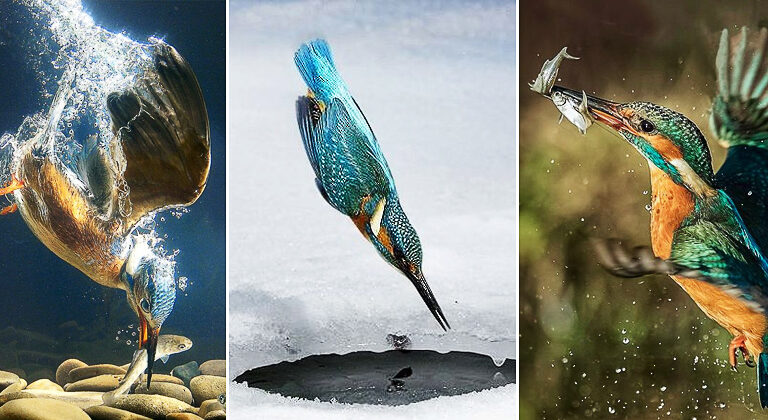kingfisher, any of about 90 species of birds in three families (Alcedinidae, Halcyonidae, and Cerylidae), noted for their spectacular dives into water. They are worldwide in distribution but are chiefly tropical.
They are most famous for diving and hunting fish, and some species do specialise in catching fish, but other species take crustaceans, frogs and other amphibians, annelid worms, molluscs, insects, spiders, centipedes, reptiles (including snakes), and even birds and mammals.
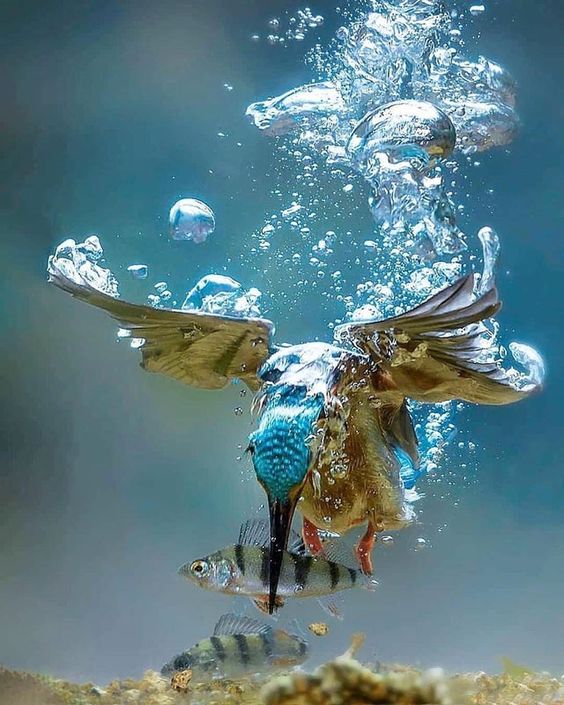
Kingfishers, ranging in length from 10 to 42 cm (4 to 16.5 inches), have a large head, a long and massive bill, and a compact body.
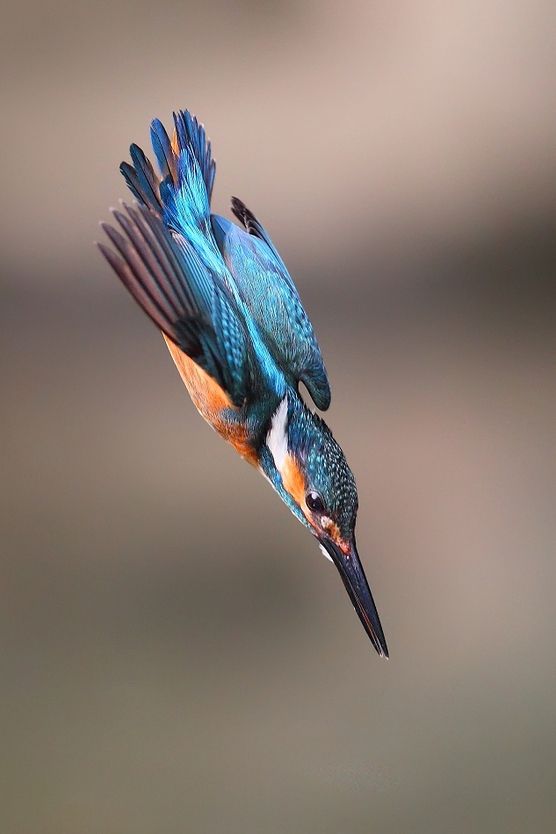
Their feet are small, and, with a few exceptions, the tail is short or medium-length. Most species have vivid plumage in bold patterns, and many are crested.
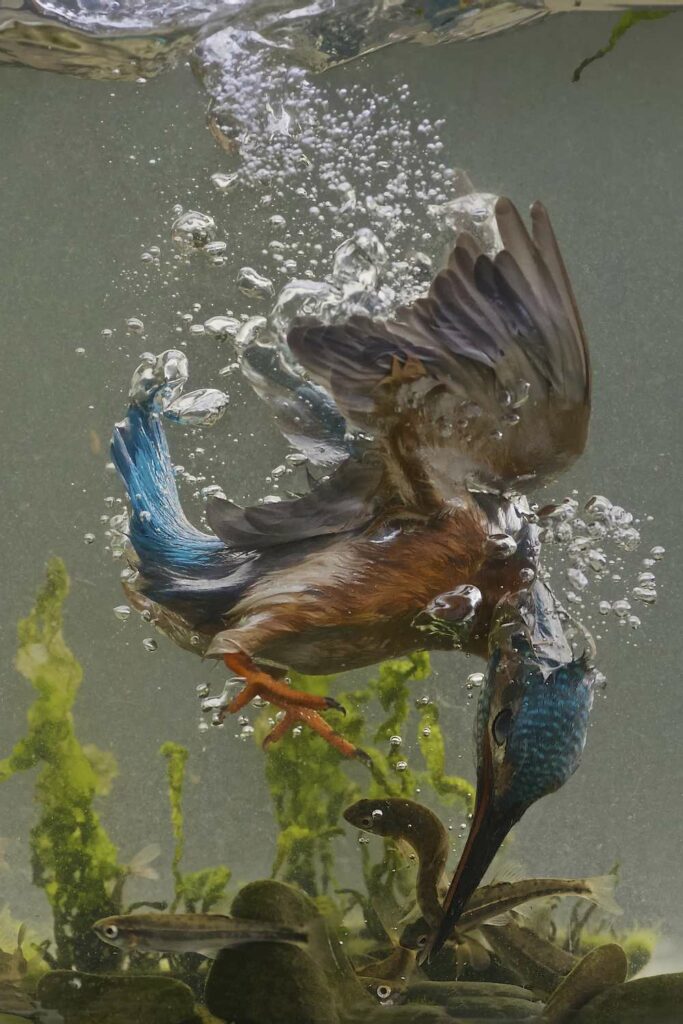
The birds, which tend to be small, with large heads and dagger-like beaks, can dive at speeds up to 25 mph, their speed is incredible and fascinating to watch.

The origin of the bird’s name is disputed. Some experts are convinced that the name kingfisher can be traced back to the old German word “eisan”, which means “to shimmer” or “to shine”. However, there is also the assumption that the name is related to the word “iron”

It is an aggressive bird that establishes and defends nesting territories, and it has a loud, raspy, distinct call.

Kingfishers can live for up to 15 years, but the average lifespan is 2 years. Green Kingfishers make a kli-kli-kli-kli-kli call that functions as a song.
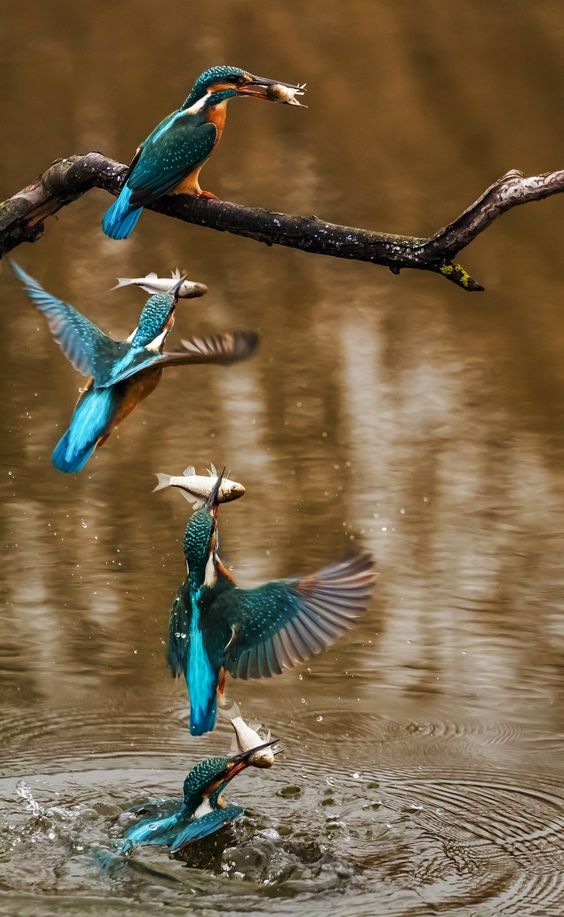
Kingfishers don’t swim great distances or for long periods like penguins or cormorants, as you can see in the underwater footages, but instead pinpoint their tiny prey from above and dive straight down like multi-colored missiles to nab their lunch.

They are capable of hovering extensively, and often hover before plunge diving to capture prey. They are much more awkward when perched, however, and their short legs and small feet make walking clumsy and difficult. Kingfishers are cavity-nesting birds.
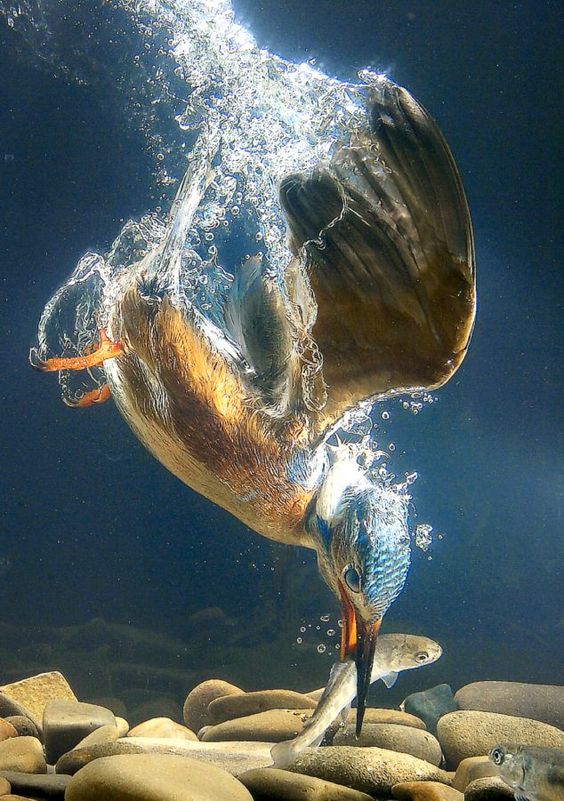
Kingfishers eat mainly fish, chiefly minnows and sticklebacks, but they also take aquatic insects, freshwater shrimps and tadpoles etc to top up their diet. They prefer fish about 23 mm in length, but can handle anything up to 80mm long.
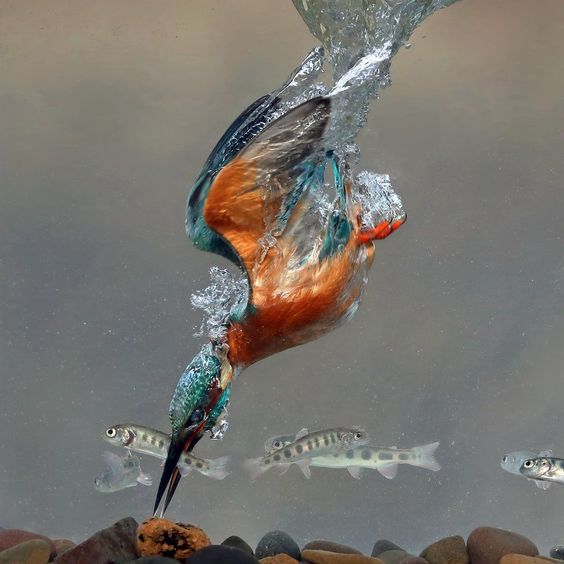
Kingfishers are widespread, especially in central and southern England, becoming less common further north but following some declines last century, they are currently increasing in their range in Scotland. They are found by still or slow flowing water such as lakes, canals and rivers in lowland areas.
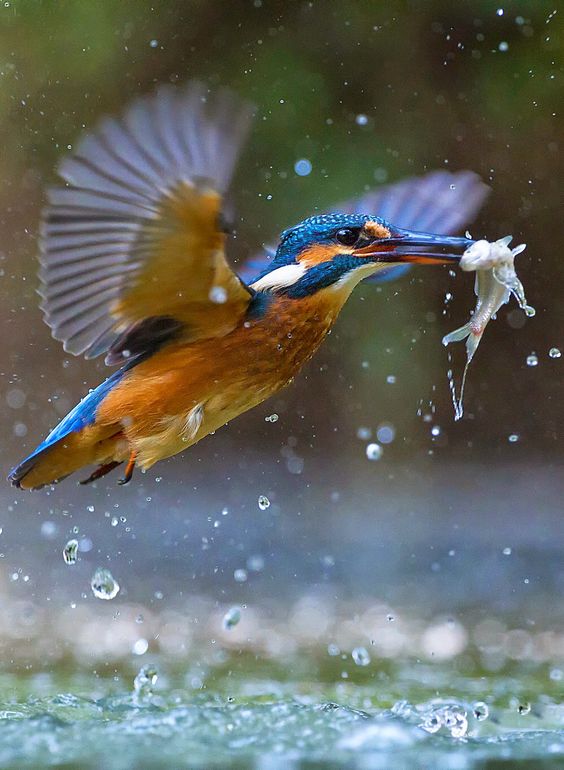
They eat mainly small fish such as minnows and sticklebacks as well as aquatic insects and newts, and need to eat their own bodyweight in food each day which is about 5,000 fish during the summer.
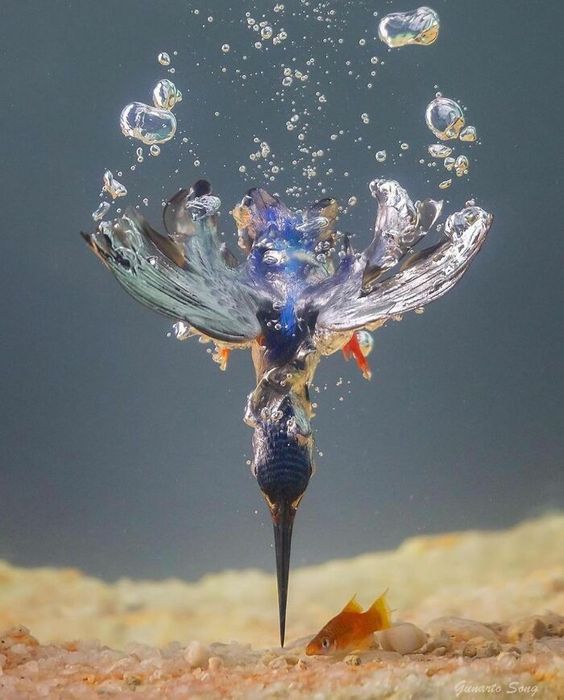
However, other Native American groups, including the Siouan tribes, look at the birds fondly and believe that kingfisher sightings indicate good fortune and good luck is on the way. Additionally, they are seen as symbols of fertility, meaning a new addition to the family is on the horizon when a kingfisher is seen.

Kingfishers are active all day but if a good meal is caught this can be succeeded by a couple of hours of quiet digestion or preening. Usually this is in a shady thicket and the bird can be hard to see.

Belted and common kingfishers only drink water, and also gain a significant amount of their hydration needs from the fish they consume.

The sexes are very similar, the main difference being the colour of the lower mandible: the male’s bill is all black while the female’s is black with red on the lower mandible. Juveniles are similar to adults, but the plumage is duller and greener and the tip of the bill is white.

Why are kingfishers so loud? An irritated male Belted Kingfisher is a good candidate, especially if you are next to a perched bird uttering his piercing scream-rattle. There’s a good evolutionary explanation for being such a loudmouth: announcing to your competitors that this is your turf, your breeding territory — Other Kingfishers Keep Out.
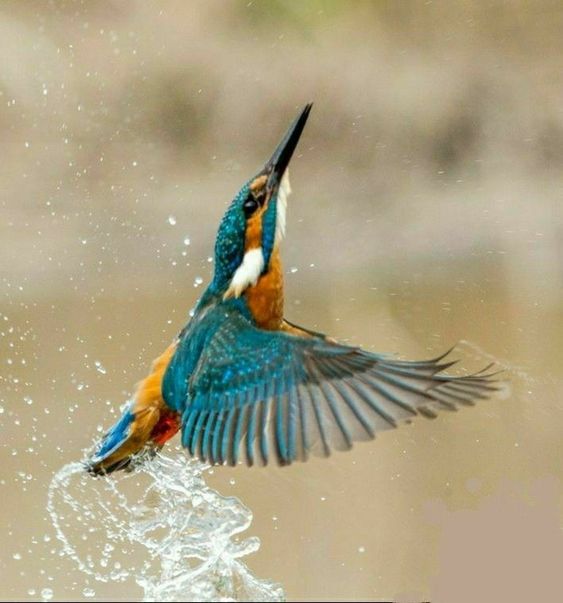
The key to telling the difference between a male and female kingfisher is the beak colour. The males beak is all black, the female has a pinky orange tinge to the lower part of the beak.

Although these creatures are known for their striking colours, the blue feathers down the back of the Kingfisher are actually brown. The bright blue colour you perceive is due to a phenomenon called structural colouration.

